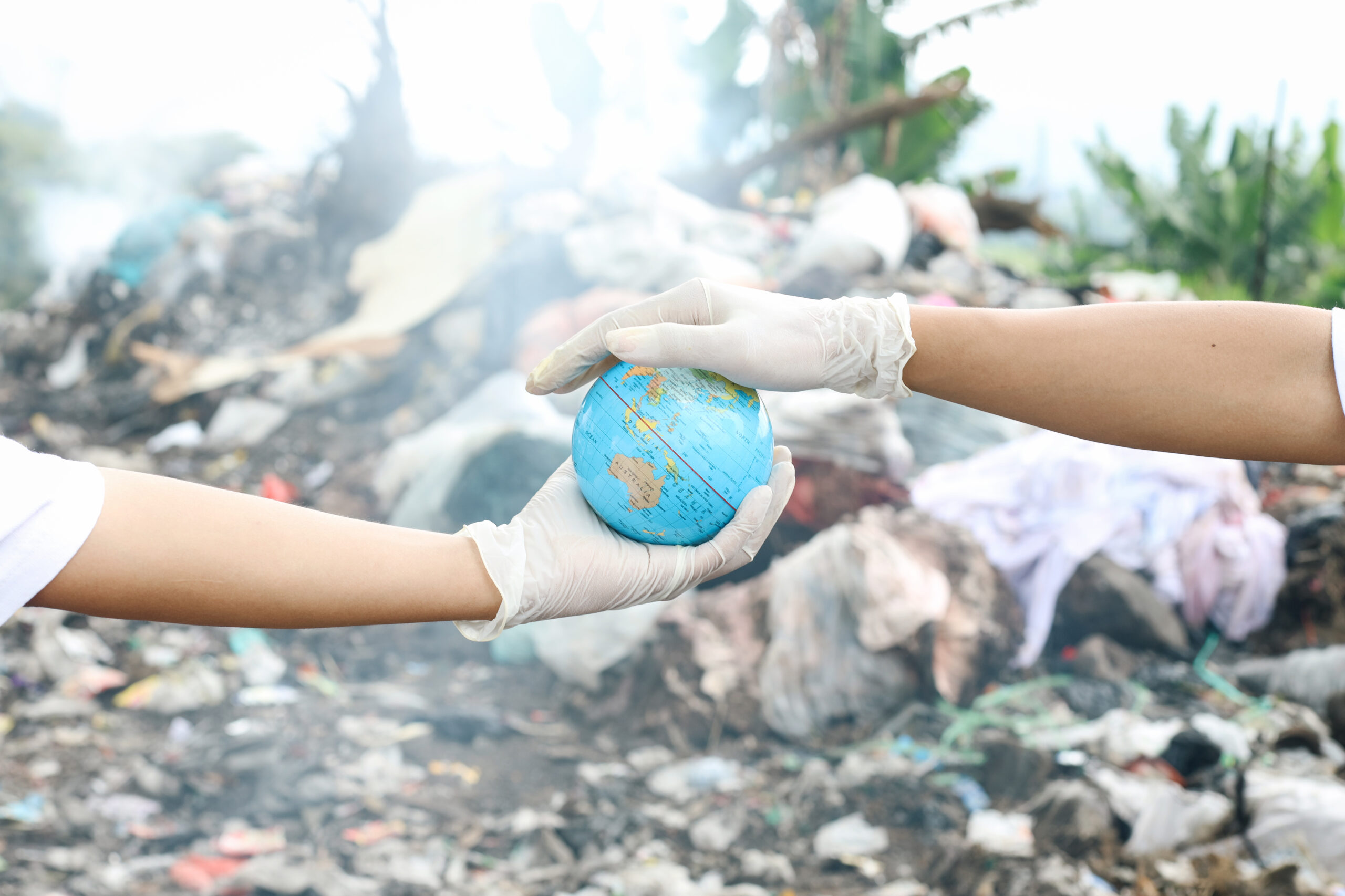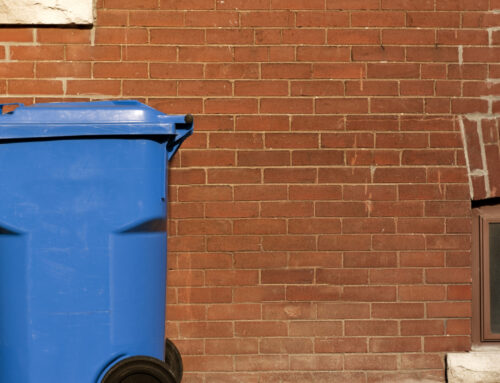
When we toss out trash, it’s easy to assume it just “goes away” once it’s picked up by the garbage truck. But the waste we generate has lasting effects on the planet, and its impact extends far beyond local landfills. The ways we manage (or mismanage) waste collection, disposal, and recycling contribute significantly to climate change. From greenhouse gas emissions to pollution, waste collection practices play a vital role in both the problem and the solution to climate change.
In this article, we’ll explore how waste impacts the environment, the connection between garbage collection and climate change, and the steps we can take to reduce our waste footprint to help protect the planet.
Understanding the Connection Between Waste and Climate Change
Climate change, driven by increased greenhouse gases (GHGs) in the atmosphere, is a global issue with far-reaching impacts. One key source of GHGs is the waste sector, which includes not only landfills but also the collection, transportation, and treatment of waste. Some of the ways waste impacts climate change include:
– Methane Emissions from Landfills: Organic waste, such as food scraps, paper, and yard trimmings, generates methane as it decomposes anaerobically (without oxygen) in landfills. Methane is a potent greenhouse gas, trapping heat at 25 times the rate of carbon dioxide.
– Carbon Emissions from Waste Transportation: Transporting waste to landfills or recycling centers involves fuel consumption, mostly from diesel trucks, contributing to carbon dioxide emissions. These emissions accumulate over time, especially in densely populated areas where waste collection is constant.
– Energy Use and Emissions in Waste Processing: Treating waste, especially through incineration or energy recovery, also generates emissions. Incineration produces both carbon dioxide and other pollutants, depending on the waste type and incineration technology used.
Understanding these waste-related sources of greenhouse gases helps to highlight why rethinking our waste management systems is crucial for climate action.
Waste Collection and Its Environmental Impact
The waste we generate includes a wide variety of materials, from food scraps to plastic packaging, electronics, and more. Garbage collection systems play a key role in managing this waste, but how it’s collected, sorted, and treated significantly impacts the environment. Here’s a closer look at how various components of garbage collection can influence climate change:
Landfill Overuse and Greenhouse Gas Emissions
Landfills are the end-point for a large portion of our waste. When waste is buried, organic materials like food and paper decompose and release methane, as previously mentioned. Many landfills have gas-capture systems to collect methane, which can be converted into energy, but not all facilities are equipped with this technology. As a result, a significant amount of methane leaks into the atmosphere, contributing to global warming.
Recycling and Resource Conservation
Recycling helps mitigate the impact of waste by reusing valuable materials like metals, glass, paper, and plastics. By recycling, we reduce the demand for virgin resources, meaning fewer trees are cut down, less energy is used to manufacture new products, and mining for metals is reduced. Recycling is less energy-intensive than producing new materials, which makes it an essential part of reducing emissions. However, contaminated recyclables or ineffective recycling practices can reduce its overall benefit.
Food Waste and Composting
Food waste makes up a substantial portion of our trash, and when it ends up in landfills, it contributes to methane emissions. Composting organic waste, such as food scraps and yard trimmings, offers a better solution, as it breaks down waste aerobically (with oxygen), producing significantly less methane. Some waste collection systems offer composting services, allowing residents to separate organic waste from general trash, which helps reduce landfill methane emissions and creates nutrient-rich compost for agriculture.
Waste-to-Energy Programs
Waste-to-energy (WTE) programs incinerate waste to generate energy, aiming to reduce landfill use while producing electricity. Although WTE facilities reduce the volume of waste, they still emit carbon dioxide and other pollutants. Advancements in WTE technology have reduced emissions, but these programs are most effective when used for non-recyclable waste and paired with stringent air-quality regulations.
Reducing Waste at the Source: Prevention as Climate Action
The most effective way to reduce the environmental impact of waste is to produce less of it. Waste prevention, also known as source reduction, involves reducing waste generation at its origin. When we produce less waste, there’s less to collect, transport, and dispose of, resulting in lower emissions. Here are some strategies for preventing waste:
Avoiding Single-Use Plastics
Single-use plastics, such as straws, bags, and packaging, are a major contributor to waste. Opting for reusable alternatives reduces the demand for single-use items, decreasing both waste and the emissions associated with plastic production.
Choosing Eco-Friendly Packaging
Consumers and businesses can make environmentally friendly choices by selecting products with minimal or recyclable packaging. This reduces waste at the consumer level and encourages manufacturers to adopt sustainable practices.
Reducing Food Waste
Preventing food waste is essential for reducing methane emissions. Simple habits like meal planning, buying only what you need, and using leftovers effectively can help prevent food waste. Many municipalities have also introduced community composting programs, allowing residents to recycle food scraps rather than send them to landfills.
Encouraging Reuse and Repair
Instead of discarding items that are no longer needed or broken, consider donating, repurposing, or repairing them. This reduces the volume of waste sent to landfills and minimizes the demand for new products, both of which reduce emissions.
How Modern Garbage Collection Is Adapting to Climate Change
To address waste’s contribution to climate change, many garbage collection services have adapted their practices, becoming more environmentally focused and efficient. Here are some modern approaches:
Alternative Fuel Vehicles
Some waste collection fleets are now using electric or compressed natural gas (CNG) trucks. These vehicles produce fewer emissions compared to traditional diesel trucks, helping reduce the carbon footprint associated with waste collection.
Enhanced Recycling Programs
Municipalities and waste collection companies are improving recycling programs to increase the quantity and quality of recyclable materials. This includes clearer guidelines for residents on what can be recycled, investing in advanced sorting technology, and creating incentives for recycling.
Composting Initiatives
More cities are offering curbside composting services, enabling households to separate organic waste from regular trash. Composting keeps organic waste out of landfills, reducing methane emissions and creating valuable compost for agriculture.
Public Education on Waste Reduction
Education programs help the public understand the importance of waste reduction, recycling, and composting. When residents are informed, they’re more likely to make environmentally responsible decisions, ultimately reducing waste at its source.
How We Can All Help Reduce Waste and Combat Climate Change
Tackling climate change through better waste management is a shared responsibility. Here’s how everyone can contribute:
Practice the 3 R’s: Reduce, Reuse, Recycle
Reducing consumption, reusing items, and recycling materials are fundamental ways individuals can cut down on waste. From choosing reusable bags to sorting recyclables properly, these small actions collectively make a big impact.
Participate in Local Composting Programs
If your city offers a composting service, take advantage of it. Composting keeps organic waste out of landfills and helps reduce methane emissions, supporting a healthier climate.
Support Eco-Friendly Businesses
Choose products from companies that use sustainable materials and packaging. Supporting eco-conscious brands helps shift the market toward sustainable practices.
Advocate for Improved Waste Policies
Advocating for policies that prioritize waste reduction and environmentally friendly waste management can lead to long-lasting change. Encouraging local governments to adopt composting, advanced recycling, and waste-to-energy programs is a powerful way to reduce the community’s carbon footprint.
A Cleaner Future
Waste management is a vital component of climate action. While garbage collection has traditionally been seen as a necessary service, it now stands at the forefront of the fight against climate change. By adapting waste collection practices, reducing our waste footprint, and supporting sustainable policies, we can make a significant impact on reducing greenhouse gas emissions and preserving our planet for future generations. In the journey toward a cleaner, greener world, responsible waste management is a step we can all take—starting with hiring garbage removal services such as AAA Sanitation.
AAA Sanitation & Garbage Removal
79 Business Dr Ste A
Hull, GA 30646
(706) 543-7788
https://aaasanitationco.com/






Leave A Comment